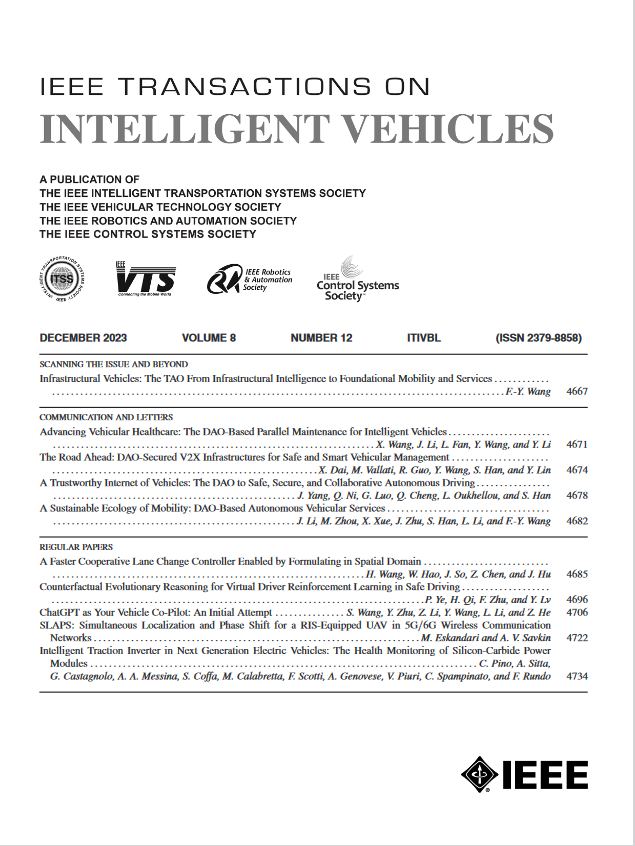Recovering Physiological Signals From Facial Videos: Recent Advances and Applications in Intelligent Vehicles
IF 14
1区 工程技术
Q1 COMPUTER SCIENCE, ARTIFICIAL INTELLIGENCE
引用次数: 0
Abstract
In recent years, non-contact physiological signal monitoring based on facial video has garnered significant attention due to its convenience and low cost. Unlike traditional methods for physiological signal monitoring, which necessitate complex equipment and stringent monitoring conditions, remote photoplethysmography (rPPG) technology relies solely on a camera to recover photoplethysmography (PPG) signals and analyze a broad spectrum of physiological metrics. This approach can be easily integrated into existing sensors in smart vehicles, enabling in-vehicle occupant status monitoring. In this paper, we conduct a comprehensive review of current research progress in detecting physiological signals using rPPG technology, specifically focusing on smart vehicles. This includes benchmark datasets, video preprocessing methods, unsupervised, supervised, and self-supervised signal restoration techniques, as well as post-processing methods applied to the signals. We also provide a performance summary of all these methods across various datasets. Additionally, we delve into the primary applications of rPPG technology in intelligent vehicles and highlight the current challenges. Finally, we conclude with a discussion on future research directions in this area to facilitate broader application of rPPG technology in the field of intelligent vehicles.从面部视频中恢复生理信号:最新进展及其在智能车辆中的应用
近年来,基于人脸视频的非接触式生理信号监测以其便捷、低成本等优点受到广泛关注。传统的生理信号监测方法需要复杂的设备和严格的监测条件,而远程光容积脉搏波(rPPG)技术仅依靠相机即可恢复光容积脉搏波(PPG)信号并分析广泛的生理指标。这种方法可以很容易地集成到智能车辆的现有传感器中,从而实现车内乘员状态监控。在本文中,我们对目前利用rPPG技术检测生理信号的研究进展进行了全面的综述,特别是在智能汽车方面。这包括基准数据集、视频预处理方法、无监督、有监督和自监督信号恢复技术,以及应用于信号的后处理方法。我们还提供了跨不同数据集的所有这些方法的性能摘要。此外,我们还深入研究了rPPG技术在智能汽车中的主要应用,并强调了当前面临的挑战。最后,对该领域未来的研究方向进行了讨论,以促进rPPG技术在智能汽车领域的更广泛应用。
本文章由计算机程序翻译,如有差异,请以英文原文为准。
求助全文
约1分钟内获得全文
求助全文
来源期刊

IEEE Transactions on Intelligent Vehicles
Mathematics-Control and Optimization
CiteScore
12.10
自引率
13.40%
发文量
177
期刊介绍:
The IEEE Transactions on Intelligent Vehicles (T-IV) is a premier platform for publishing peer-reviewed articles that present innovative research concepts, application results, significant theoretical findings, and application case studies in the field of intelligent vehicles. With a particular emphasis on automated vehicles within roadway environments, T-IV aims to raise awareness of pressing research and application challenges.
Our focus is on providing critical information to the intelligent vehicle community, serving as a dissemination vehicle for IEEE ITS Society members and others interested in learning about the state-of-the-art developments and progress in research and applications related to intelligent vehicles. Join us in advancing knowledge and innovation in this dynamic field.
 求助内容:
求助内容: 应助结果提醒方式:
应助结果提醒方式:


